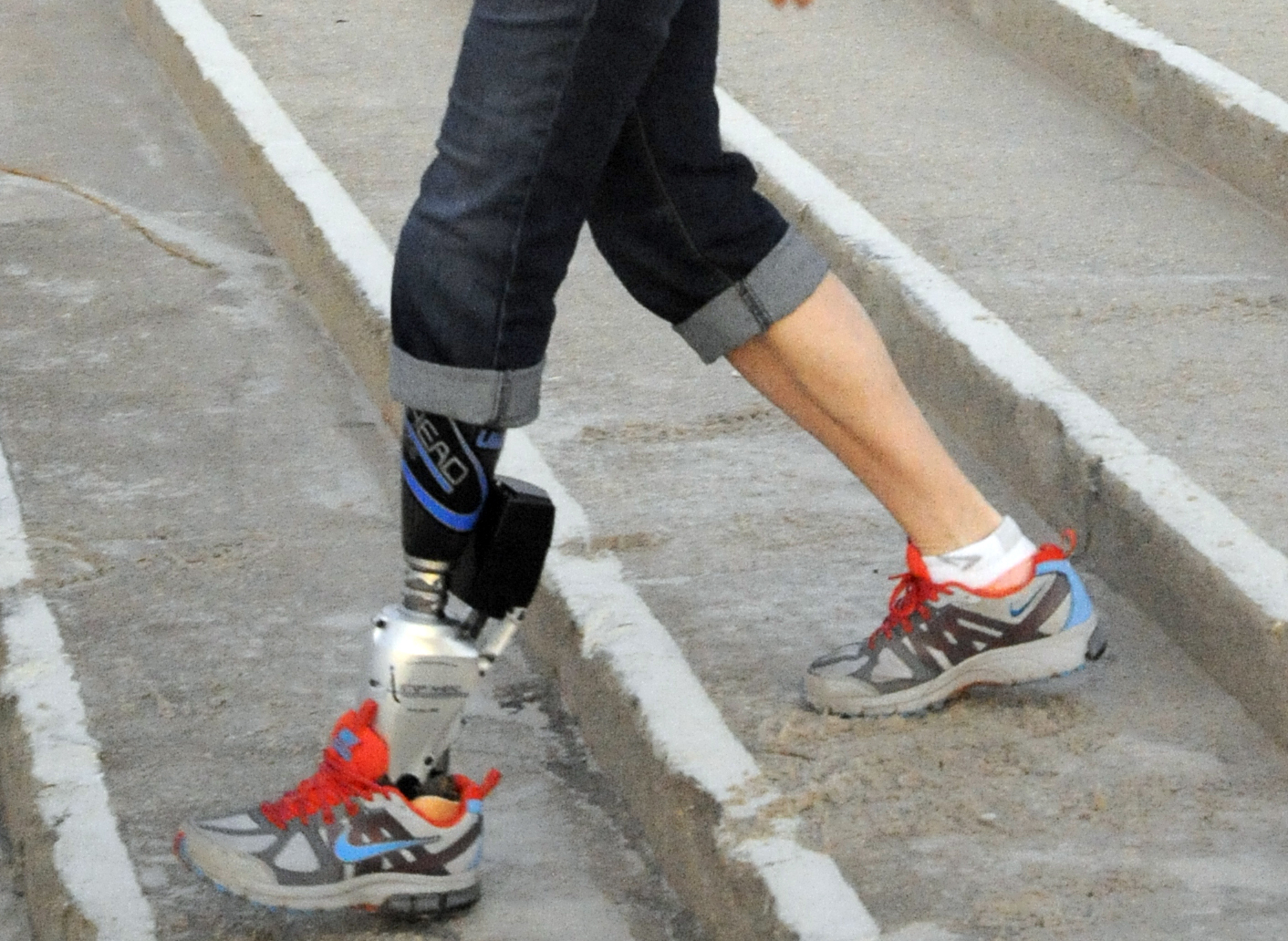With his amicable demeanour and brilliant smile, Cameron Clapp is the quintessential Californian. There is, however, one other dominant element of his persona—his shiny, state-of-the-art robotic limbs.
Clapp, now 26, lost both his legs below the knee and his right arm after getting hit by a train at the age of 15 near his home in Grover Beach. Following years of rehabilitation and a series of medical procedures—each more technologically advanced than the previous one—Clapp has joined a new generation of people who are embracing revolutionary advancements in biomechatronics as a means of surpassing their bodies’ limitations.
In the U.S. alone there are almost two million amputees. Robotic prosthetics, though often presented as a harbinger of a soulless future, populated with flesh-and-metal cyborgs like RoboCops and Terminators, in reality, help amputees regain their sense of self-reliance.
Wearable robotic prosthetics are a dynamic and expanding sub-genre of biomedical engineering concerned with the design, fabrication, and fitting of customized artificial limbs. For individuals who have lost limbs as a result of traumatic injuries, vascular diseases, diabetes, cancer, or congenital disorders, these devices restore the function and appearance of a full or partially missing limb. Variations in human anatomy make the fabrication of prosthetics an intricate procedure that requires a high degree of skill and an array of sophisticated technologies.
There are series of challenges and opportunities facing the biomedical and tissue engineers in charge of designing and constructing an artificial or robotic limb. Such a biometric design problem can be divided into four interrelated subsystems: first, an artificial hand as a biomimetic; secondly, prosthetic implants which use electromyography—electronic signals in muscles; thirdly, tissue reactions to the material of the implants, and finally, inflammatory responses of the cells surrounding implanted sensors that interfere with the signal transmission of such sensors.
The ‘ideal’ design requirements of satisfactory prosthetic limbs have been defined as ease of control (i.e. body controlled), functionality (performance of multiple routine activities), comfort (with good interface and correct weight inertia, and biocompatibility in the short and long term), and cosmetic intricacy (with skin and design properties).
The technology in lower limb prosthetics is advancing rapidly. M.I.T. professor Hugh Herr has founded a startup called iWalk devoted to making next-generation prosthetics. The company’s first product—a bionic foot and ankle—resulted from careful modeling of the muscles, tendons and spinal reflexes used in human walking. The foot can sense its wearer’s actions, as well as terrain and adjust accordingly. Microprocessors help coordinate reflexes like responses to the user’s motions, and robotics simulate the action of missing calf muscles and Achilles tendons.
Another product, the C-Leg, is yet another example of the blazing advancements in the field of prosthetics. It works with tiny programmable microprocessors, lightweight composite materials, and keen sensors to restore remarkable degrees of mobility in amputees. C-Leg combines computer technology with hydraulics. Sensors on the leg detect terrain and microprocessors guide the limb’s hydraulic system, enabling it to simulate a natural step. It literally does the walking for the walker.
In addition, upper limb prosthetic research has generated a biomimetic solution for the development and use of artificial muscles. Arrays of shape memory alloy actuators, inspired by biological muscles, are today being employed to drive a five-fingered hand with a spectacular 20 degrees of freedom in movement, meaning it allows movement in twenty different directions.
Upper limb prosthetics has also received much attention from McGill’s department of biomedical engineering, where dynamic mechanical properties of the peripheral motor system are being analyzed.
“Here at McGill, we look into muscle responses to sensory change, which are altered by the pathological condition of the body,” Professor Robert Kearney, from the department of biomedical engineering, said.
The muscle responds to varying conditions, prompting changes in mechanical properties. These changes are being studied and further implemented in prosthetic designs.
While technological advancements in the field are moving forward at an accelerated pace, so too is the cost of producing these bionic prosthetics. About 15 rehabilitation centers in the United States are using modern battery operated bionic suits; they pay $140,000 for each one, along with a $10,000 annual service contract.
The enormous price tag associated with the field has raised eyebrows. The questionable marketability of modern prosthetics has made headlines. Cost sensitivity adds another dimension to the challenges faced in the fabrication of artificial limbs. A Google image search reveals the most visually pleasing and dynamically sound prosthetic designs, but these do not match what one sees in a rehabilitation center. In reality, artificial limbs are not as glossy as they appear, and a sophisticated yet cost competitive bionic limb is still needed.
The future of prosthetics lies in the fabrication of artificial limbs that are at the pinnacle of functionality and bionic beauty but also affordable. The dream is a remarkable piece of biomechatronic design that is cheap enough to be sold in a sporting goods store.










Hey,
Its well written and well researched 🙂